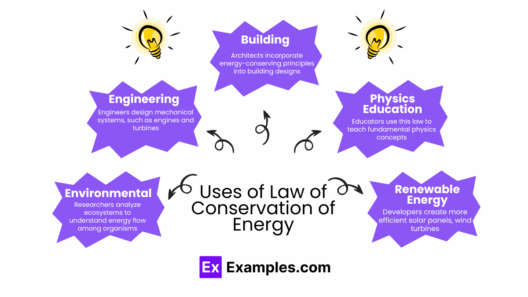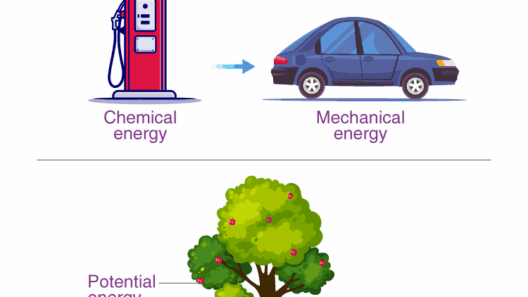Energy conservation is one of the fundamental principles in physics, governing how energy is transformed and transferred within a system. Understanding whether energy is conserved can be elucidated through the Hamiltonian approach. This method not only provides insights into the dynamics of a physical system but also reveals profound implications in various fields such as mechanics, thermodynamics, and even quantum mechanics.
The Hamiltonian framework is predicated on the concept of the Hamiltonian function, typically denoted as H, which embodies the total energy of the system—comprising kinetic and potential energies. This method allows us to transition from Newtonian mechanics to a more sophisticated and generalized understanding of motion. By delineating energy levels through the Hamiltonian, we can discern when and how energy conservation manifests.
To ascertain if energy is conserved within a given system, one begins by formulating the Hamiltonian. This typically necessitates identifying all relevant degrees of freedom, which are the parameters that characterize the state of the system. For instance, in a mechanical system involving a pendulum, the position and momentum of the pendulum are the critical variables. The kinetic energy, formulated as (1/2)mv², and the potential energy, typically represented as mgh, can be included in the Hamiltonian function.
Once the Hamiltonian is established, the next step involves applying Hamilton’s equations. These equations are derived from the principle of least action and encapsulate the dynamics of a physical system. In its simplest form, Hamilton’s equations can be expressed as follows:
dq/dt = ∂H/∂p dp/dt = -∂H/∂q
Here, q represents the generalized coordinates while p symbolizes the conjugate momenta. By solving these differential equations, one can obtain the trajectories of the physical system over time.
A crucial aspect of the Hamiltonian approach is its relationship to the conservation of energy. If the Hamiltonian is time-independent, meaning it doesn’t explicitly depend on time, the system exhibits conservation of energy. This concept can be encapsulated by the principle that the total differential of the Hamiltonian, dH, equates to zero:
dH/dt = 0
Thus, if the Hamiltonian remains constant as time progresses, energy is conserved. This condition may appear mathematically austere, but it unveils a fascinating perspective on the invariance of energy. Consider a closed mechanical system where no external work is performed. The Hamiltonian remains unchanged, validating the conviction that energy is preserved.
However, complications arise under conditions where the Hamiltonian explicitly incorporates time. In these instances, energy may not be conserved. For example, if external forces or fields introduce non-conservative interactions—like friction or drag—the Hamiltonian evolves, creating scenarios where energy dissipates as heat or sound. The implications become increasingly intricate in quantum systems, where energy might transiently exist in non-conserved forms due to superposition and tunneling effects.
Exploring the nuances of time-dependent Hamiltonians uncovers riveting scenarios where energy fluctuations can reveal greater truths about the system’s interactions with its surroundings. These excursions into time-dependence prompt the examination of external constraints that influence energy dynamics, enriching our comprehension of energy flow in entropy-driven systems.
One compelling application of the Hamiltonian approach to conservation is found within the realm of celestial mechanics. Here, the motion of planets and their interactions are governed by gravitational forces that can be intricately analyzed through the Hamiltonian framework. For instance, by incorporating perturbative forces into the Hamiltonian, one can investigate how energy redistributes among celestial bodies without an outright loss, thus abiding by the conservation laws while reflecting the complexities of cosmic dynamics.
Moreover, Hamilton’s principle elucidates a relationship where, under specific symmetries, conservation laws can be derived. Noether’s theorem articulates that for every continuous symmetry of the action of a physical system, there exists a corresponding conservation law. In essence, if the Hamiltonian is invariant under certain transformations, such as spatial shifts or rotational invariance, the associated energy characteristics remain conserved.
To extend the discourse, the application of the Hamiltonian approach in state-variable control systems also merits attention. In engineering fields, analyzing systems through a Hamiltonian lens can inform sustainable practices by allowing for precise energy management and conservation strategies. Whether optimizing the efficiency of engines, enhancing renewable energy systems, or modeling ecological systems, the Hamiltonian approach becomes invaluable.
The Hamiltonian perspective shifts the lens through which we evaluate energy processes. It allows us to navigate complex systems, whether in natural phenomena or engineered constructs, with potential applications ranging from understanding climate systems to optimizing energy use in smart grids. The shift in viewpoint fosters curiosity about the intricate tapestry of interactions in our world, inviting us to explore the depths of energy conservation in its myriad forms.
In conclusion, utilizing the Hamiltonian approach provides a rigorous and comprehensive framework to determine energy conservation in various systems. By establishing the Hamiltonian, applying Hamilton’s equations, and recognizing the intricate interplay of time dependence, we can not only ascertain energy conservation but also appreciate the broader implications of energy dynamics across disciplines. Ultimately, valuing energy conservation through such a foundational approach serves not only theoretical interests but also practical considerations vital to sustainable development in our ever-evolving world.







